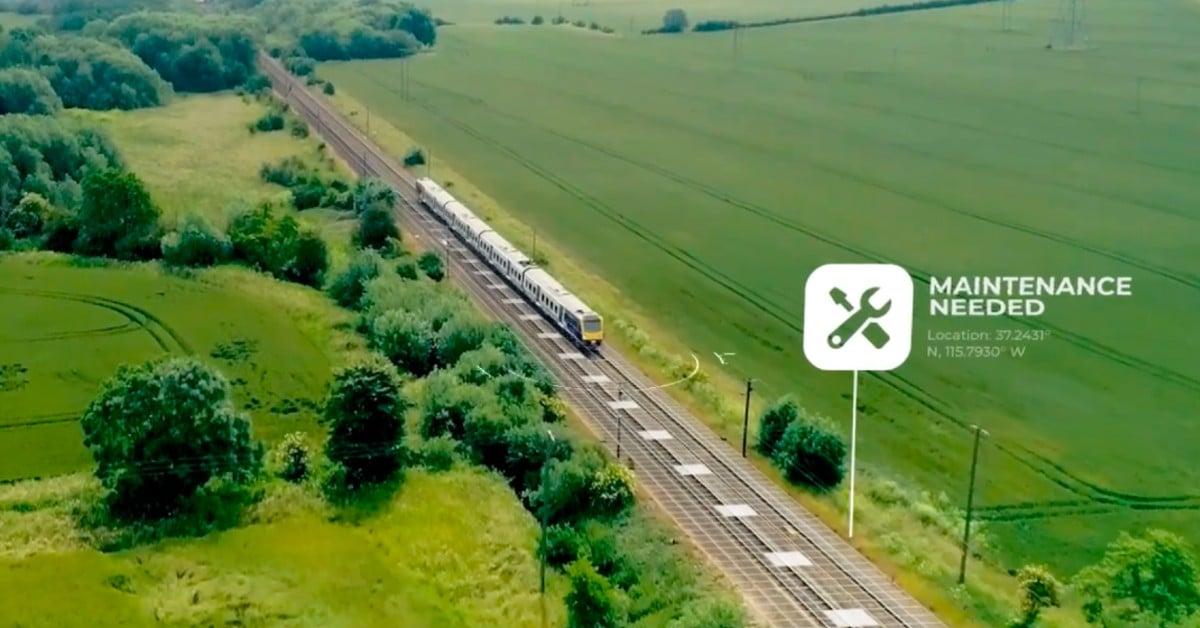Thermal Vision Ecology Makes First Thermal Kit Designed Specifically for Ecologists Tracking Wildlife

Thermal Vision Ecology, a thermal solution provider based in Bristol, is creating the first mobile thermography kits designed specifically for ecological surveys. The goal of these kits is to make recording wildlife easier, speed up post survey reporting times, and provide increased safety out in the field. We spoke with Andy Milner, Managing Director of Thermal Vision Ecology, on the challenges ecologists face and how their new kit is helping overcome them.
The Challenge for Ecologists
Businesses and public utilities performing large outdoor projects are often required by law to perform environmental impact assessments to determine what kind of effect their work could have on their environment. The assessment is needed for buildings planned for demolition, servicing tunnels, or any other outdoor utility work and gauges whether there is any protected wildlife in the area that would require extraction before continuing work.
Companies will contract professional ecologists to perform these assessments and provide proof of their compliance with environmental impact regulations. Proper wildlife extraction presents a challenge, as ecologists need empirical evidence to back up their survey and that potentially puts them at odds with the customers that are required to contract with them. Project leads want surveys completed as soon as possible so that they can begin their work, meaning ecologists have limited time to get their evidence if they believe there are animals in the area. In the worst-case scenario, a customer could file suit against the ecologists if they believe their project is being delayed without proper cause.
Andy explained, “In the past, [an ecologist] may have said, ‘We think there might be bats in there, we saw some bats flying from that roof, but we can't be sure if it's an emergence.’ Then you've got a building contractor who's got millions of pounds at stake saying, ‘I need to know for sure, you can't hold up the building work based on a guess.’”
Enter Thermal Vision Ecology
Thermal Vision Ecology is the sister company to FLIR distributor, Thermal Vision Research. The licensed supplier of FLIR cameras is based in the United Kingdom and they recently created their new branch to focus entirely on the needs of ecologists. The FLIR partner has primarily supplied the R&D, academic, defense, and aerospace fields with thermal solutions, but recently dipped into the ecology field after being requested to help perform a bat survey.
“I was asked to do a bat survey last August and it's not something we get asked to do very often,” Andy recalled. “We were asked to do a survey a large building with complex roofing, lots of different roosts, and they couldn't use their traditional night vision technology. I went down, but it was all a bit of a mess of cables because they’re designed to be used in laboratories. I realized there was potential though for a whole new side of the business doing outdoor surveys.”
The Thermal Vision Ecology Kit
Since their clients are working outdoors and typically need to travel to multiple spots, Thermal Vision Ecology created a kit that has high resolution thermal detection, portable power, and can be used by someone brand new to thermography.
“We've been developing the kit to make it streamlined and easy to use for an ecologist who's using quite a sophisticated scientific instrument and make it seem not so intimidating.” Andy said.
The Thermal Vision Ecology kit comes with a FLIR A700sc camera, multiple lens options, tripod, a Windows tablet with FLIR Research Studio installed, a battery providing six hours of power, and setup guide all within a wheeled flight case. The windows tablet comes preinstalled with FLIR Research Studio and filters that assist in tracking any wildlife that comes into view. Thermal Vision Ecology also offers additional support for their customers, either by sitting on a call to walk the client through the setup process or even come out into the field with them.
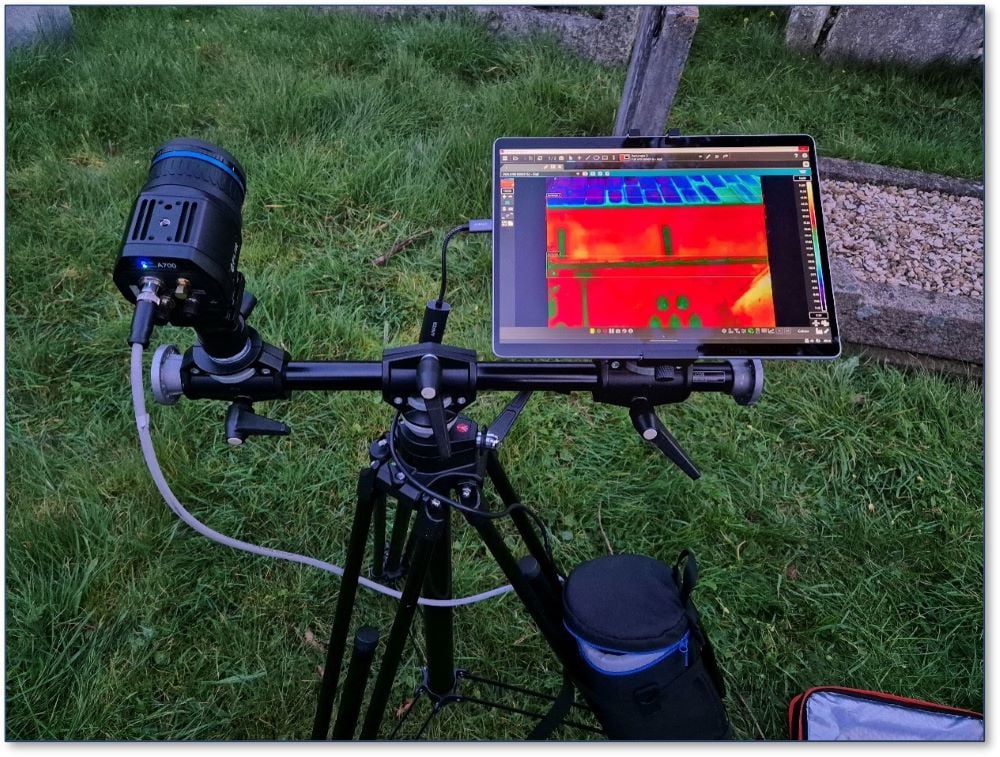
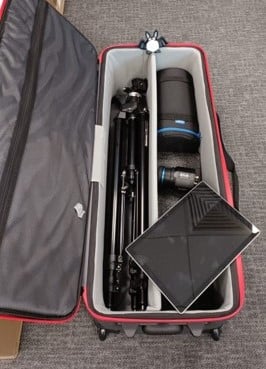
Thermal Vision Ecology's kit setup in the field and packed in its carrying case.
The Thermal Difference
The biggest difference thermal makes in an ecologist’s job is the data it gives them to work with. Traditionally, ecologists use night vision cameras to record MP4 videos and JPG images of their targets. But these MP4 and JPG recordings provide only visual data and can’t be manipulated in ways that make the ecologists’ search any easier. With thermal cameras, on the other hand, the radiometric data they record allows them to apply filters that can drastically improve the survey process.
“[Ecologists] love the fact that they that it's all based in software,” Andy said of FLIR Research Studio’s usefulness. “When they do a recording, they don't just get an MP4 video back; they can apply different palettes, different filters, and obviously the tracking as well before they then export it as a video or as a JPEG. I think that's the main selling point. They love the fact that they can just press record and leave it for the full survey. They don't need to monitor it in real time, so there's nothing you can do during the survey that you can't do afterwards in the software. FLIR Research Studio is what allows us to offer something different to the ecologists.”
One of the included filters imprints any temperature changes on the screen which in turn creates a trailing effect for any moving targets. In the case of locating bats, the trail left behind not only makes spotting them much easier but can also provide a much better idea of where there travelling to and from their roosts. Having an accurate idea of the roost location also has the added benefit of speeding up the extraction process should it be necessary. If the ecologist decides to stay with the camera as it records, these filters can also be applied in real time and make a fast-moving target much easier to see live. Thermal data also allows an ecologist to change any visual settings or filters after a survey in case they use the wrong settings initially or simply want to present their findings differently.
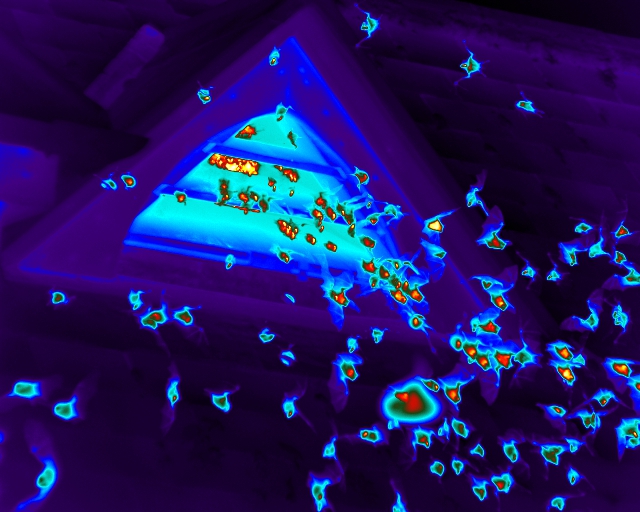
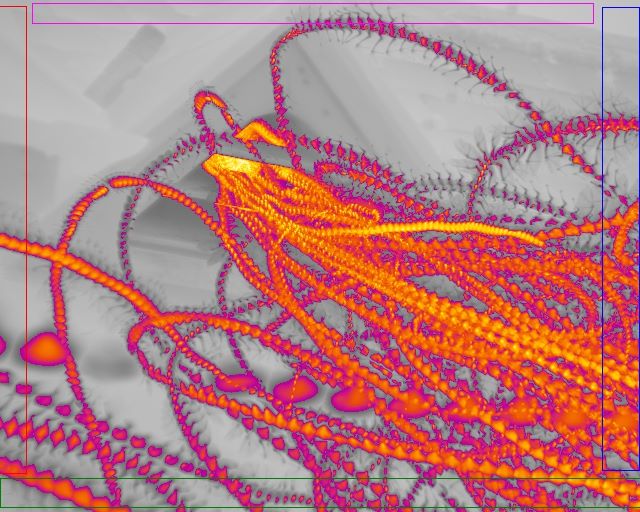
Flight paths visualized in two different ways using Thermal Vision Ecology's kit.
The thermal data also assists with speeding up post-survey reporting. Ecologists with a standard MP4 video would have to watch the entire video back and watch carefully for any activity. Thermal data can be displayed on a time plot though, meaning the user can simply look for any spikes in temperature and know exactly where an activity took place.
Thermal imaging cameras provide better and safer detection than their traditional counterparts as well. Night vision cameras have a limited range and require an extra lamp to provide a source of infrared light to illuminate a scene. Thermal Vision Ecology’s kit with the FLIR A700sc can detect heat signatures significantly farther, meaning difficult to monitor areas become much easier to view.
Andy explained how useful extended range can be on a survey. “Last night I was on a railway bridge, and we could see bats from 200 meters away coming out of a railway tunnel,” he said. “If they didn't have our camera, they would have to have shut down that train line, it would have cost money, there would have been lots of health and safety forms to complete, and it would have been inconvenient to the busy rail line. They would have to stop that for an evening to do this survey but with our cameras, they could do it from the top of the bridge and film from a safe distance as well.”
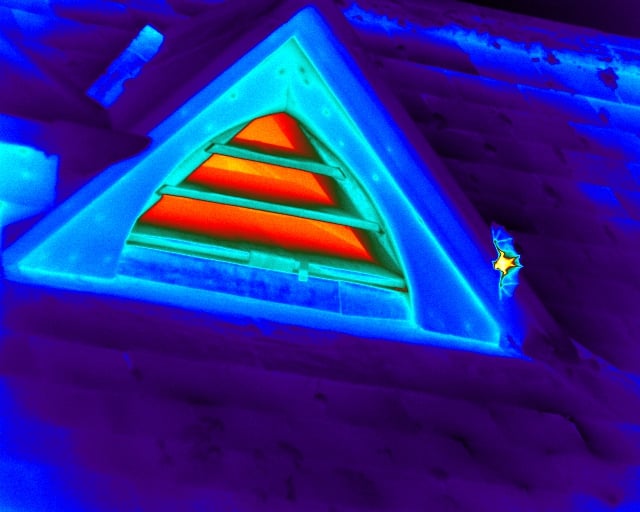
A bat caught on thermal returning to its roost in a window.
Ecologists will also make use of bat detectors: small devices that convert the ultrasound of a bat’s echolocation into audible frequencies. Bat detectors are limited though in that they only signal a bat is in the area and not specifically where the noise is coming from. Thermal imaging combined with the filters Thermal Vision Ecology uses not only reveals bats in the dark, but the visible flight path assists in identifying where the bat is flying in from.
Reception and Future Plans
Andy says the reception from the ecologist community has been overwhelmingly positive and that they’ve received useful feedback on how to improve their product in the future. The company so far has stuck to bat searches as they’re one of the most common surveys performed but they’re aiming to test their product on different wildlife searches in the future. Andy also hopes they can increase portability and make their kit even easier to move around while out in the field. Lastly, the managing director has hopes for incorporating bat detectors into their kit as well to add audio into their recordings.
For more information on Thermal Vision Ecology, you can find them on their website at https://thermalvisionecology.co.uk/
You can also keep up with the team and see more of their work by finding Andrew Milner, Jethro Block, and Dr. Liat Wicks on LinkedIn.
